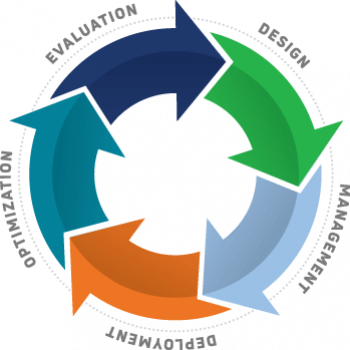Changes to a building over time can often make building performance less efficient and less resilient. To ensure your building’s energy resilience, the team at Stark Tech can provide an infrastructure assessment that provides a roadmap to optimization and cost savings. As time passes, building use characteristics often diverge from those used initially to design and commission a building. A good example of this is improper outside air ventilation rates which can lead to problems with indoor air quality (IAQ), or excess operational costs. Building power and cooling infrastructure components can also wear out and fall out of calibration. Adding more powered equipment exceeds power capacities and causes unanticipated downtime issues to emerge.
As systems age, performance declines, leading to failures that significantly impact the bottom line. We partner with our customers to implement solutions that keep systems operational by thinking strategically about proactive measures and how those actions impact the business over time.
How Does Stark Tech Perform Infrastructure Assessments?
At Stark Tech, we work as a Schneider Electric EcoXpert™ Partner with expertise in their EcoStruxure™ Building architecture and building controls & automation. Our engineers encounter many situations where building owners need help to improve existing building performance.
A perfect example is a research facility that examines proteins and crystals in their research of bacteria and virus-borne diseases. The facility recently decided to upgrade its installed base of microscopes in response to pharmaceutical customer demand for more accuracy. Their building power infrastructure can handle a 1 MW power switch. Before, it was enough as they only used 600 kW on an average day. However, energy consumption rises up to 800 kW on the hottest summer days when air conditioning systems work at full capacity.
The upgrade required a cost-effective, steady power supply with peaks above 1MW to accommodate stringent purity requirements and avoid losing data and research samples.
Our solution was to implement a lithium-ion-based energy storage solution physically located inside the building. The selected battery supplies stored power to the facility when demand spikes over 1MW. It recharges from the grid. This cost-effective change managed the building’s increased power capacity requirements and kept the lab competitive.
Approaches for Validating Current Building Requirements
Organizations should take preliminary steps to validate building power, cooling, and automation requirements.
- Identify common needs of both traditional and new critical infrastructure – Building owners need to periodically assess the health of different types of building critical infrastructure. This includes both generators and power distribution systems and the IT backbone – anything that keeps the building on its mission at a predictable operating cost. Assessing these infrastructure pillars is necessary to determine whether changes to the building have altered the efficiencies.
- Identify needs unique to your facility – Understanding the unique requirements of the building under management also heavily impacts how technology is deployed to improve performance. Sports arenas, for instance, have a specialized need for higher dehumidification. To accommodate tens of thousands of fans and maintain proper ice rink temperatures, one needs high-precision temperature control and monitoring.
Healthcare facilities require more highly regulated environments. Circulating air has to be regularly monitored. Sophisticated backup power systems are required since connected hospitals have no real ability to shut down. In government and municipal buildings–such as prisons and K-12 public schools–a higher focus on safety and security emerges as a primary concern. Commercial buildings are focused more on comfort and lighting so that employee productivity can be maintained. Applying the right building automation technologies suited to your building’s unique needs is a key performance driver.
Changing Times Demand More Building Resilience
Building owners must prioritize building resilience across all facility types. The occupants took predictable building performance for granted for many years. But now, the existing power grid has grown older. The US is phasing out power sources such as coal and nuclear while introducing new solar and wind power. These changes make power quality more intermittent and downtime can now occur in areas where power fluctuations were once rare. In addition, pockets of businesses continue to expand across regions driving more demand for clean, “always on” power. To withstand the demands of the “new normal,” building infrastructures need reexamination.
Visit the Schneider Electric EcoStruxure for Buildings web site. Learn more about how digitized building controls & automation solutions can improve building performance.
Want to see how Stark Tech, a Schneider Electric EcoXpert, is helping to drive energy efficiency in buildings? Read more here.




